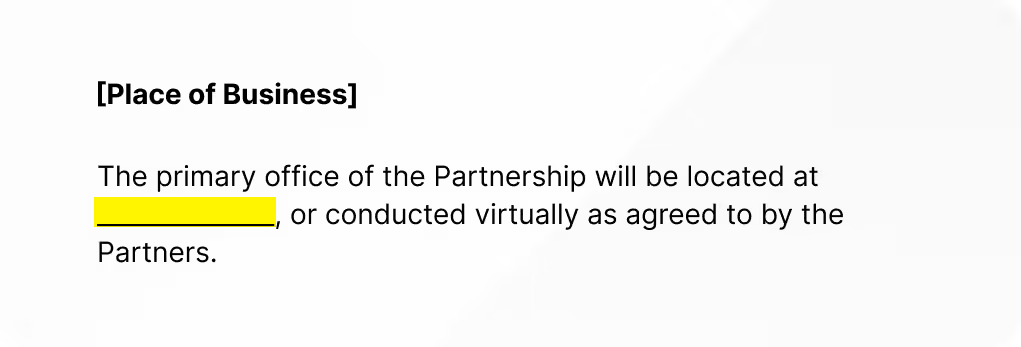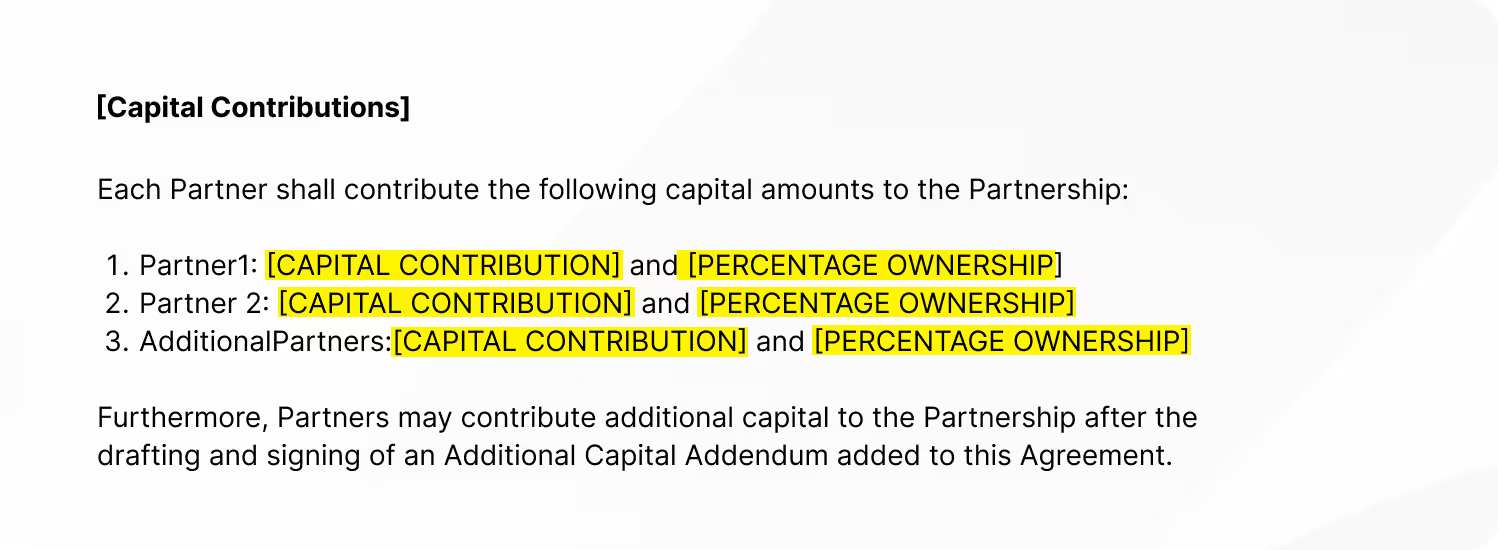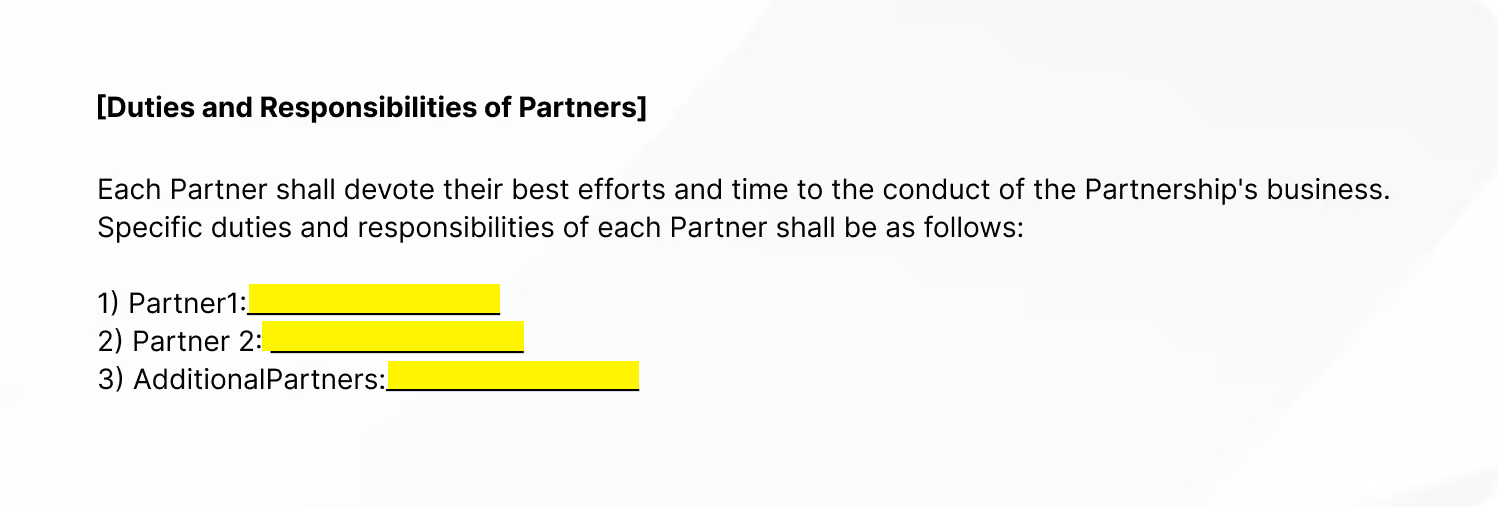Partnership Agreement Template
A partnership agreement is a written document between business partners outlining how their partnership operates. It clearly defines responsibilities, rights, and expectations, helping avoid conflicts down the road. Download a free, customizable template, learn about the key clauses to include, how to confidently protect your business interests and sign everything securely using Sign.Plus.
What is a Partnership Agreement?
Business partners use operating agreements to ensure clarity and prevent misunderstandings that could negatively impact the business. While not always legally required, these agreements are valuable in establishing a solid foundation for a mutually beneficial relationship.
When should you use a Partnership Agreement?
While verbal agreements can be appealing because they're quick, they're often unclear and hard to enforce. A written partnership agreement helps prevent misunderstandings and provides a clear path to resolving disputes. It clarifies everything up front, making future interactions smooth and hassle-free.
Some common use cases of business partnership agreements:
- Forming a new business
- Adding a new partner to an existing business
- Changing the structure of a partnership
- Resolving disputes
Types of Partnerships
General Partnership: All partners share management responsibilities and liability.
Limited Partnership (LP): Includes general partners who manage the business and limited partners who invest but do not manage daily operations.
Limited Liability Partnership (LLP): Partners have limited personal liability for business debts, protecting personal assets.
Limited Liability Company (LLC): LLC operating agreements offer limited liability to its members (similar to a corporation) but is taxed like a partnership.
Download your business partnership agreement template as a Word doc now. Use Sign.Plus to easily edit, fill out and sign your partnership online.
Why might you need a Partnership Agreement?
Without one, your business defaults to state partnership laws—rules that rarely fit how you want to operate. A customized agreement lets you:
- Allocate profits and losses fairly. Divide returns according to each partner’s actual investment of money, time, or expertise instead of an automatic 50/50 split.
- Clarify decision‑making. Define voting thresholds or assign specific partners authority so important choices and day‑to‑day actions don’t stall.
- Plan for change. Spell out buy‑outs, succession, and what happens if a partner leaves or dies, preventing unwanted dissolution or asset distributions.
Customize your partnership agreement template and sign it online
We’ve created this business partnership agreement template to save you time and money when it comes to streamlining business operations. With Sign.Plus, these documents can be signed online right away. You just need to customize the contract template based on your own requirements and send it for signature through our fully encrypted dashboard.
Sign.Plus is a secure and legally-binding electronic signature solution that allows you to sign and send documents from anywhere, at any time, using any device. Our platform is secure, reliable, and user-friendly, so you can focus on what matters most, growing your business.

How to Write and Fill out a Partnership Agreement?
Step-by-step guide to fill out Sign.Plus's Partnership Agreement template
Formulation and Purpose of Partnership
.avif)
Place of Business

Term of Partnership

Capital Contributions

Profit and Loss Allocation

Binding Authority
.avif)
Admitting a New Partner

Management

Partnership Property

Duties and Responsibilities of Partners

Withdrawal and Retirement
Dissolution
Non-Compete Clause
Dispute Resolution
Amendments
Governing Law
Entire Agreement
Frequently Asked Questions


1. General Partnership: All partners share in the management and profits/losses.
2. Limited Partnership: At least one general partner manages the business and assumes unlimited liability, while limited partners invest but have limited liability.
3. Limited Liability Partnership (LLP): Similar to a general partnership, but partners have limited liability for the debts and actions of other partners.
4. Limited Liability Company (LLC): LLC operating agreements offer limited liability to its members (similar to a corporation) but is taxed like a partnership.


Download Free Partnership Agreement Template Now!
Use Sign.Plus to streamline your agreements today.
Download and customize our contract now to meet the unique needs of your business.
DISCLAIMER: The information on this site is for general information purposes only, and Sign.Plus cannot guarantee that all the information on this site is current or accurate. This is not intended to be legal advice and should not be a substitute for professional legal advice. For legal advice, consult a licensed attorney regarding your specific legal questions.

















